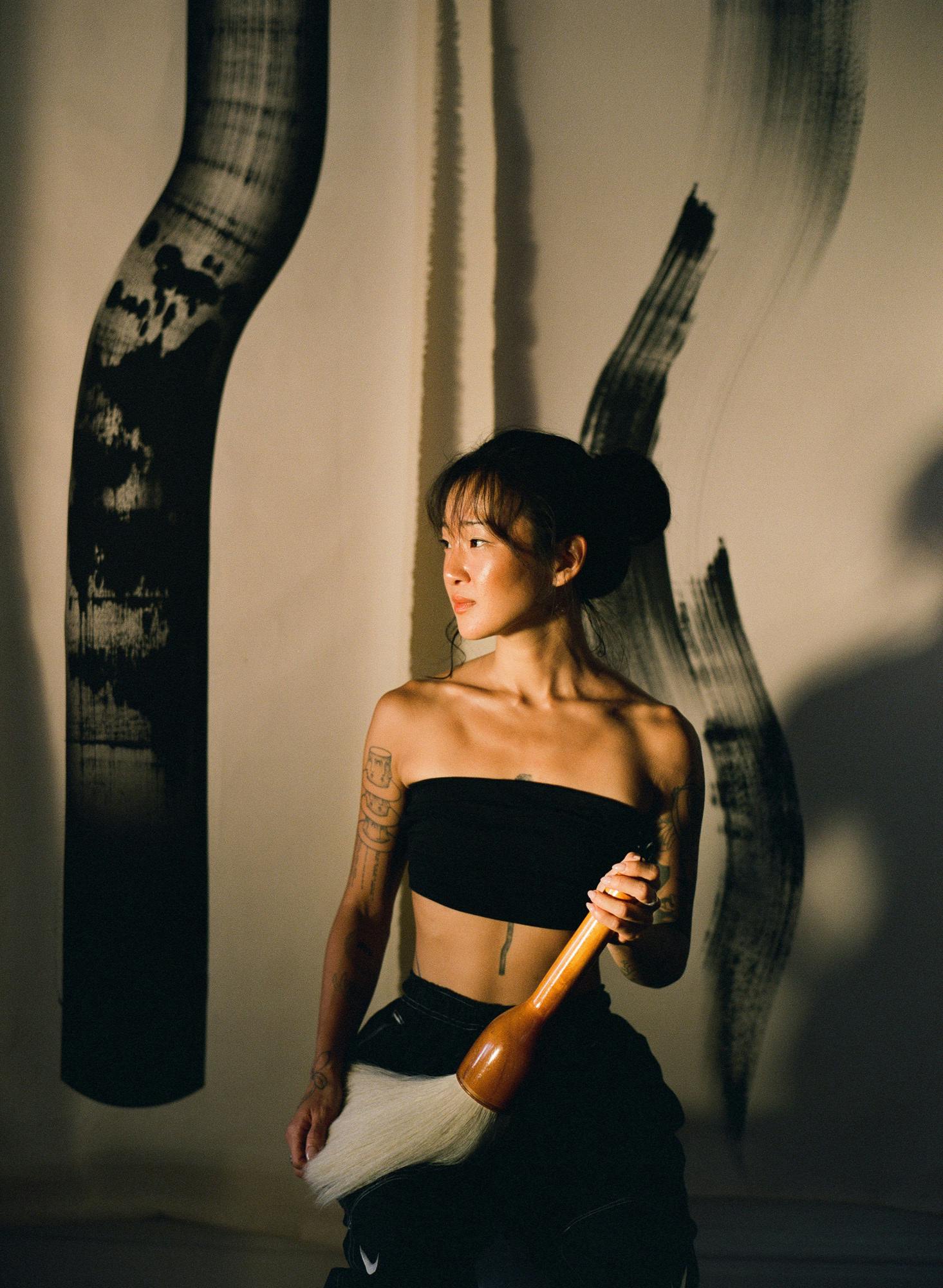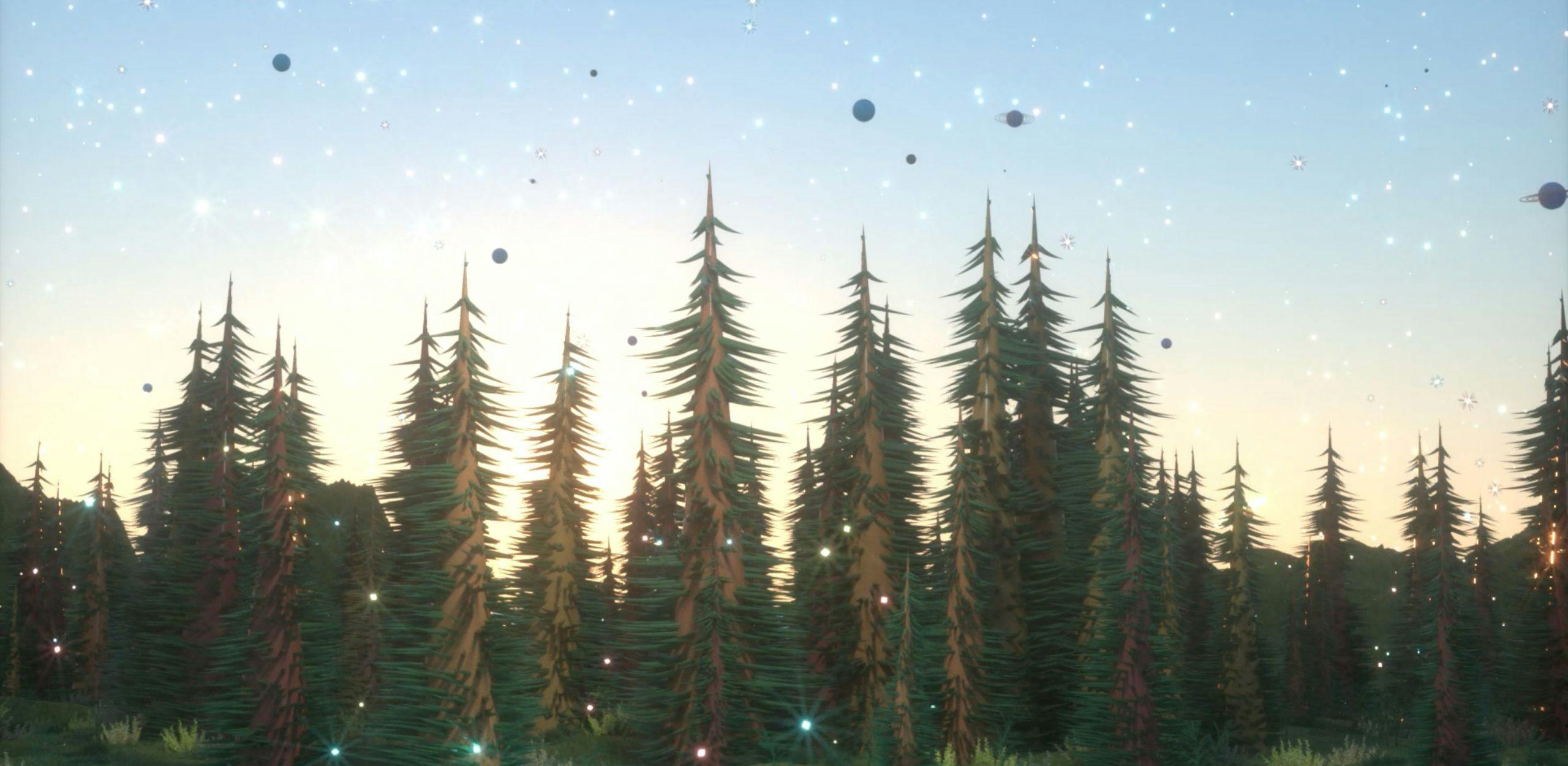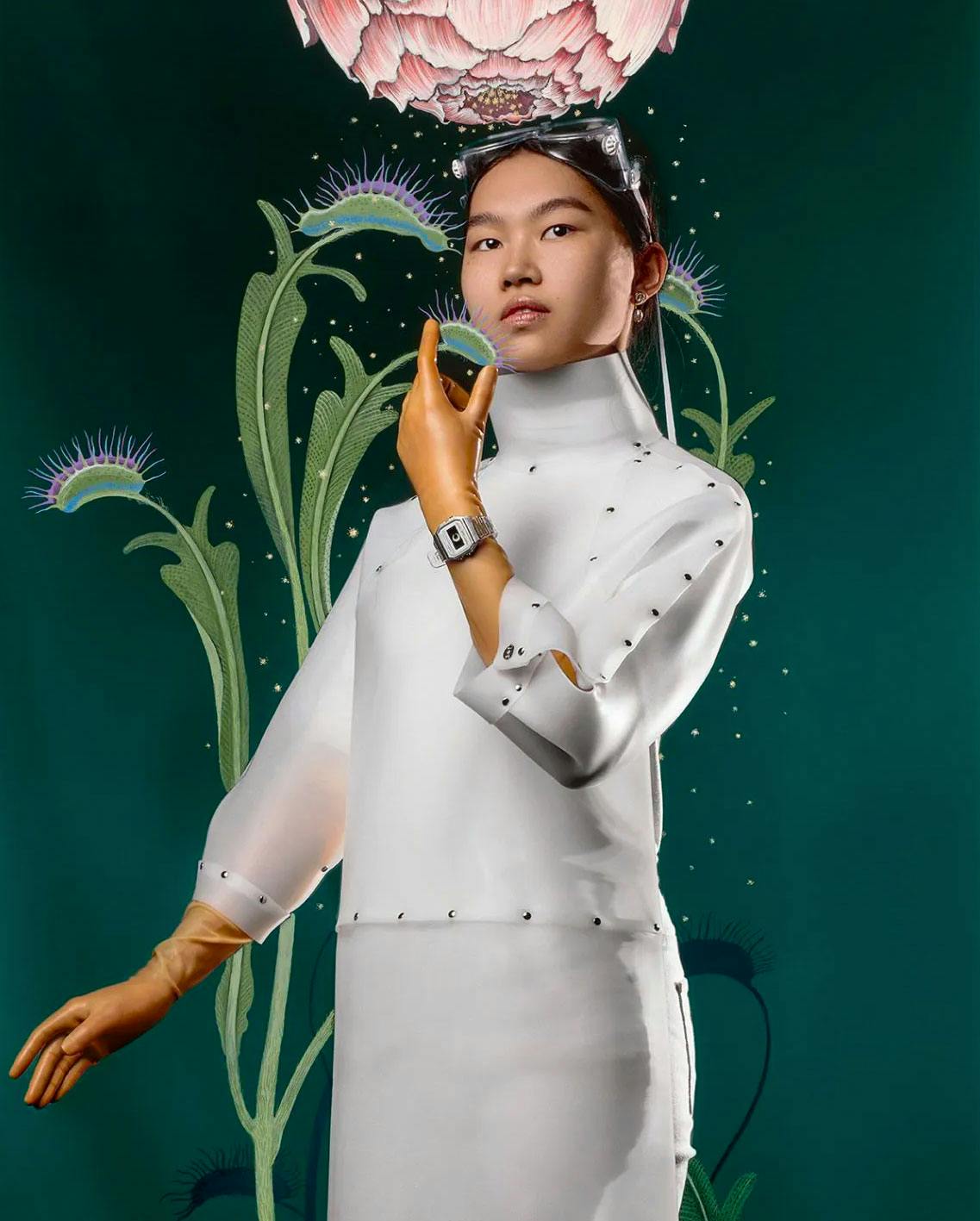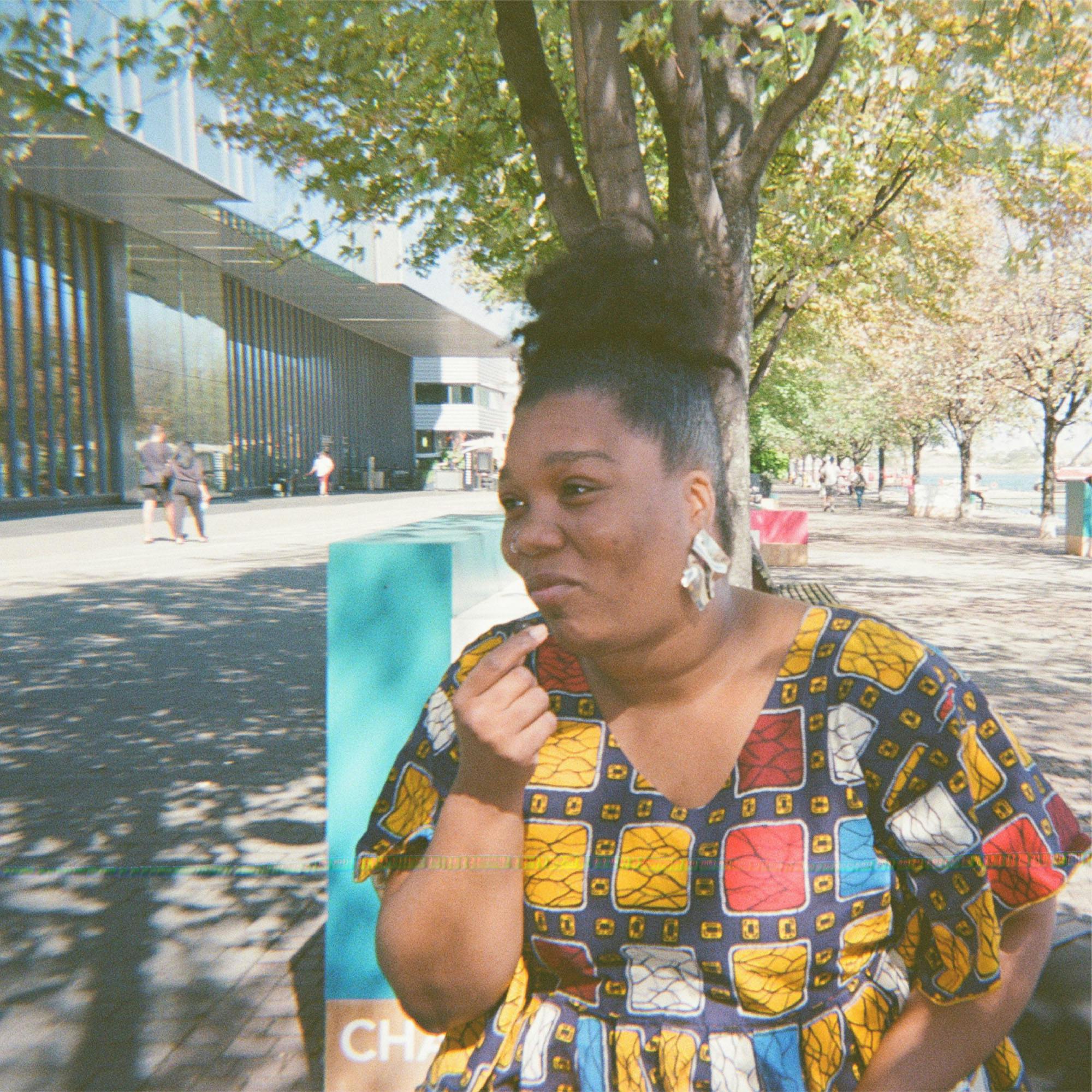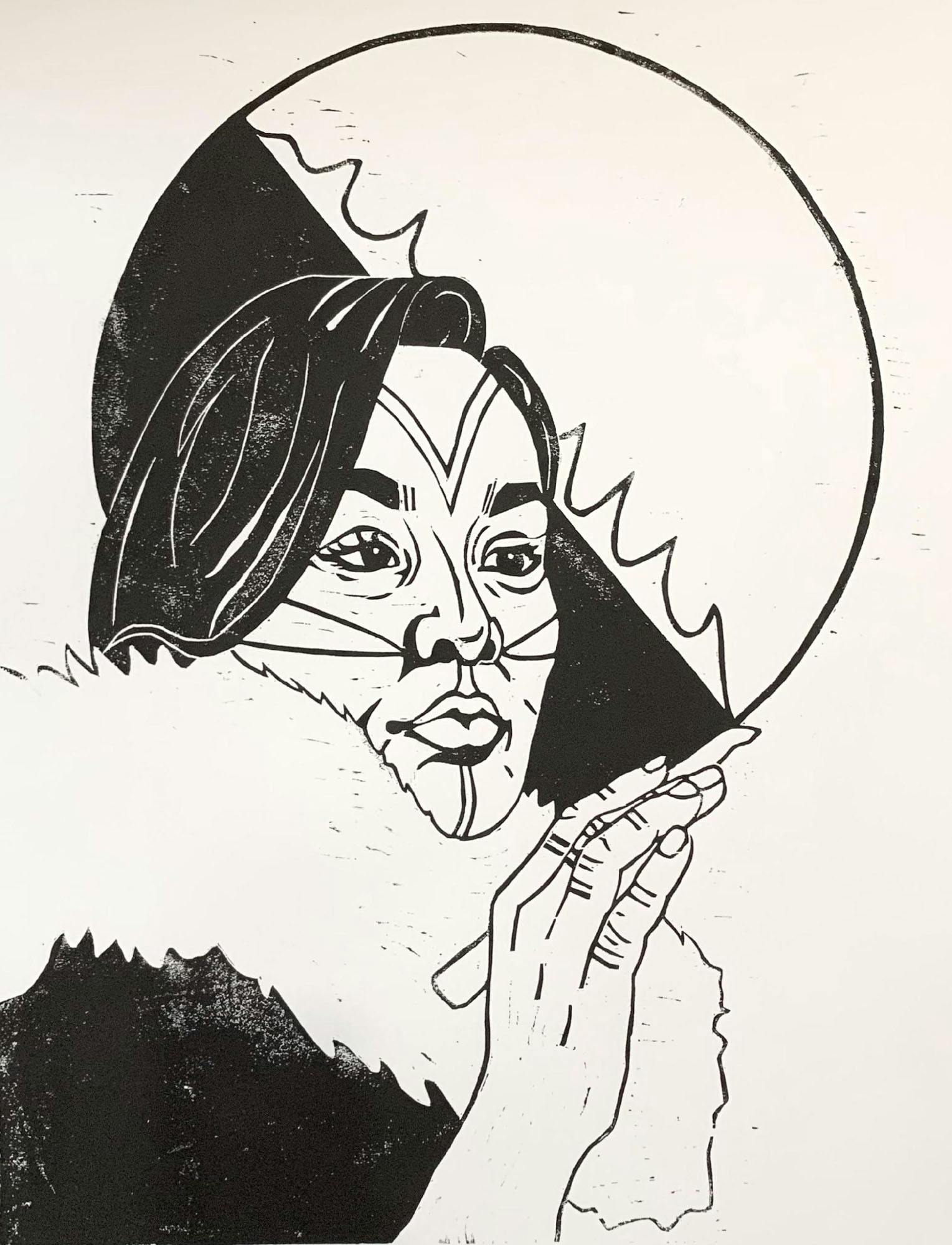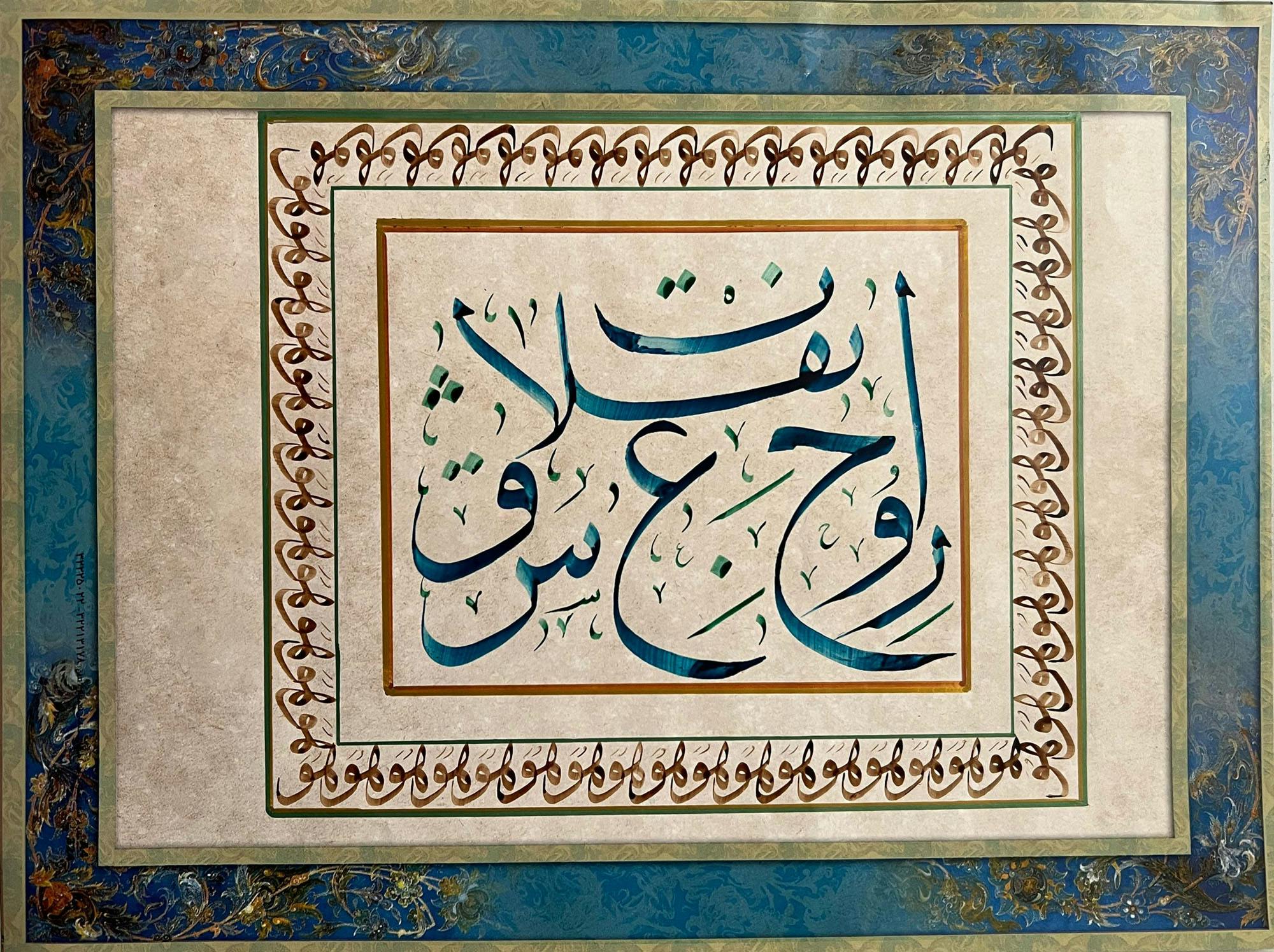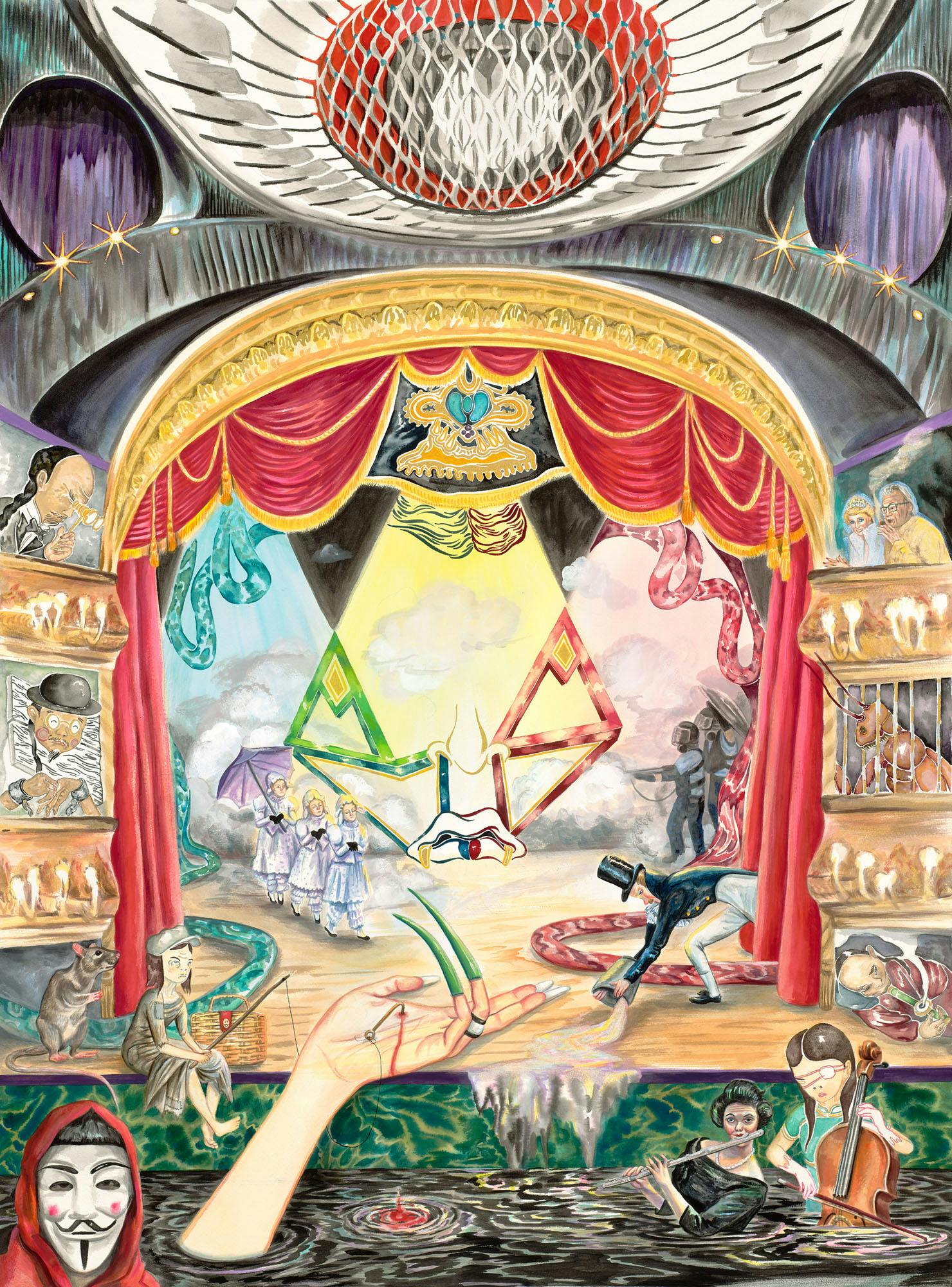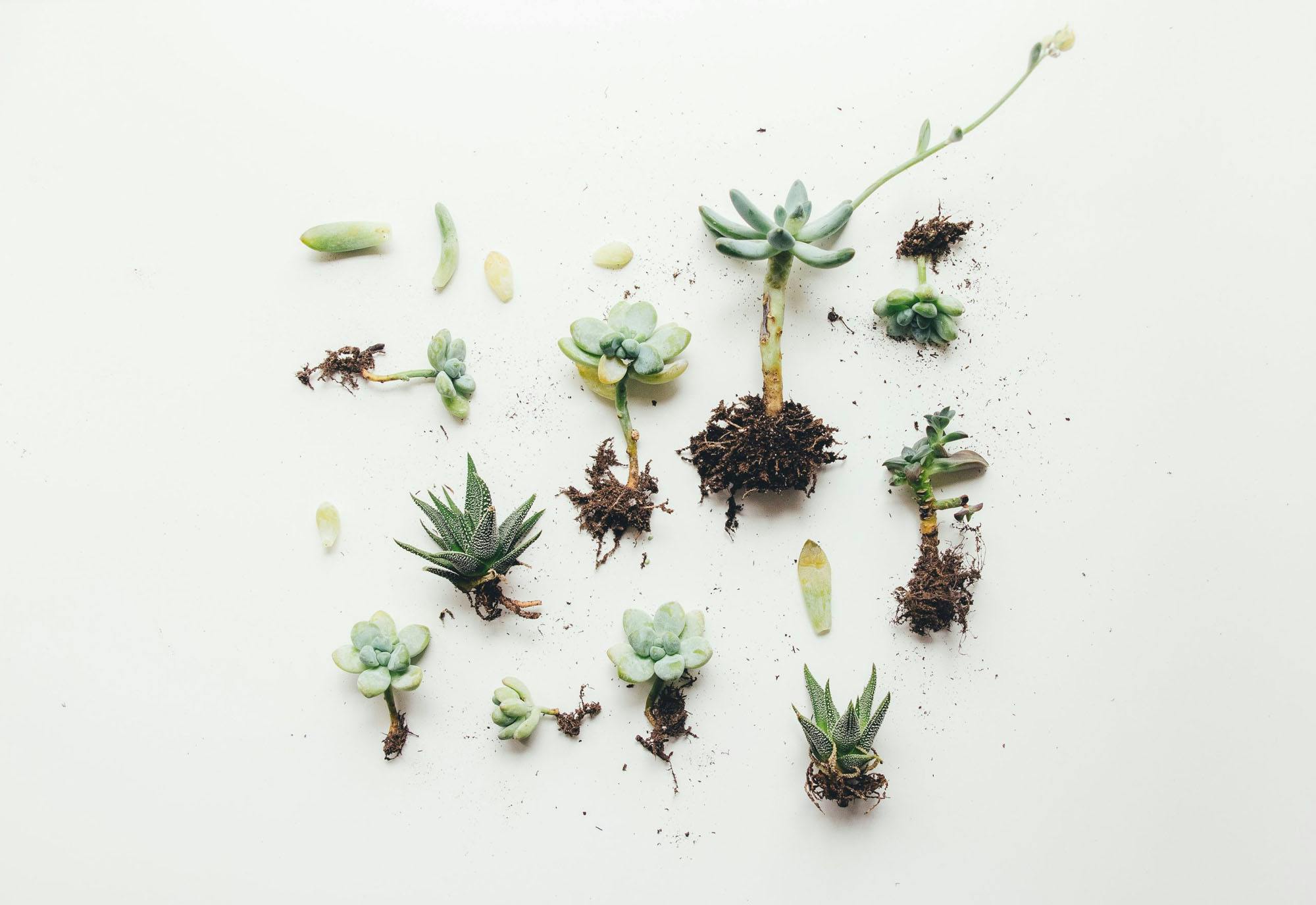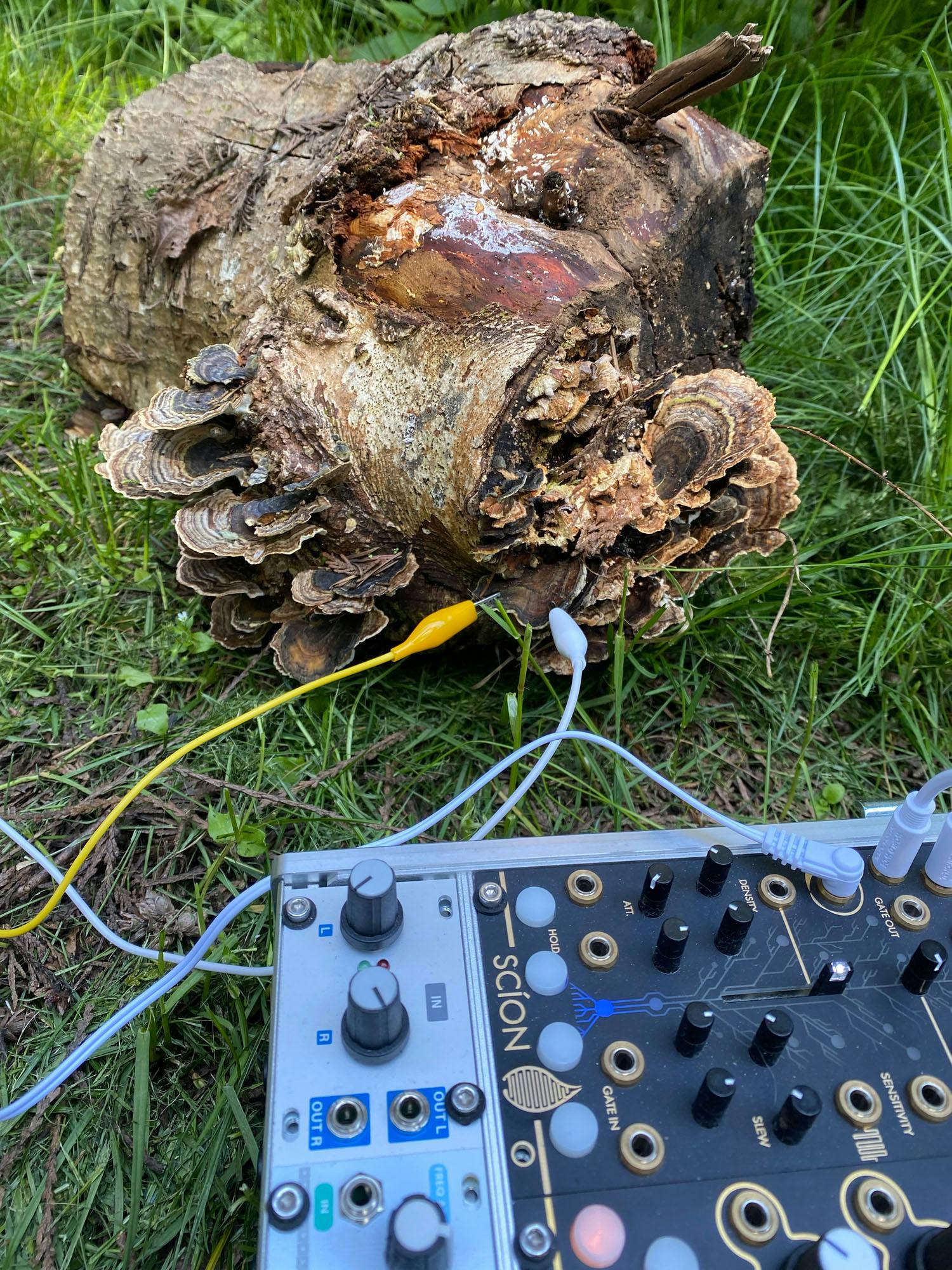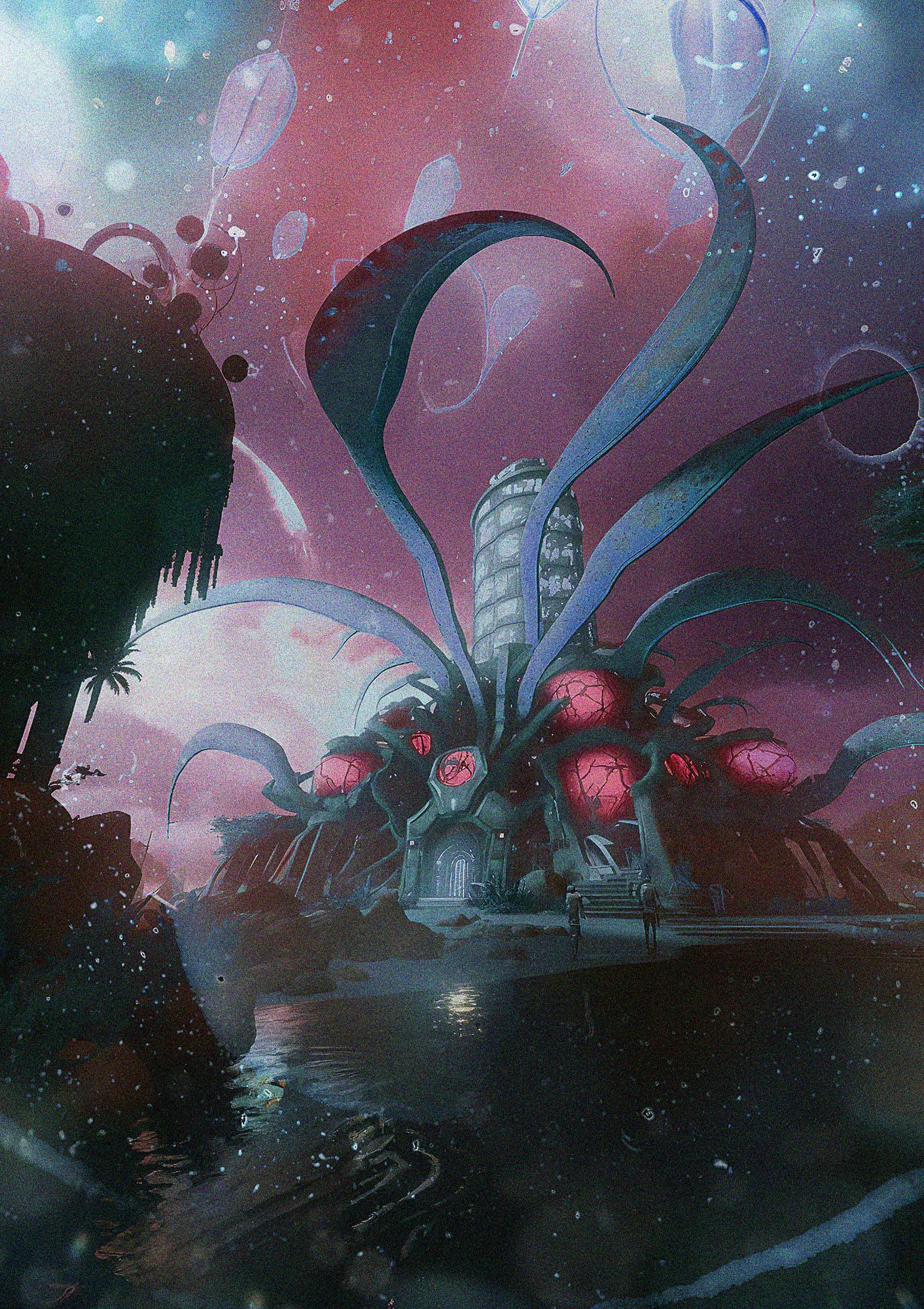
This artwork represents a world where humans and nature coexist in harmony, working together to create a sustainable society. Inspired by the principles of Afro-Futurism, Solarpunk, and biomimicry, this piece is an exploration of what our world could look like if we embraced a new way of living, one that is focused on creating from a place of healing rather than trauma.
At the heart of this artwork is a building that is both functional and beautiful, designed to work in harmony with the natural environment that surrounds it. Built using the principles of biomimicry, this structure draws on the natural world for inspiration, taking cues from the way plants and animals are designed to thrive in their environments.
One of the most striking features of this building is the way it is surrounded by giant plants that provide fresh air and shade, creating a microclimate that supports life and growth. These plants are not just decorative features; they play a vital role in the building’s overall design, providing natural cooling and filtering out pollutants from the air.
The island of Protopica is not just a vision of a sustainable future; it is a symbol of hope and possibility. As the world becomes increasingly fragmented and polarized, it can be easy to feel like the barriers that separate us are insurmountable. But by creating a tourist destination where all passports and nationalities are allowed, regardless of the landscape of diplomatic hierarchies, we are sending a powerful message about our collective future. This is an opportunity to tackle the systemic barriers that impede citizens from developing countries from exploring the world freely, and to show that we can find ways to overcome. In the future, I believe that Protopica will serve as a beacon of hope, inspiring others to work towards a more inclusive and equitable world.
This is an opportunity to tackle the systemic barriers that impede citizens from developing countries from exploring the world freely, and to show that we can find ways to overcome.

Protopica – Will Selviz
At the heart of this artwork is a building that is both functional and beautiful, designed to work in harmony with the natural environment that surrounds it. Built using the principles of biomimicry, this structure draws on the natural world for inspiration, taking cues from the way plants and animals are designed to thrive in their environments. One of the most striking features of this building is the way it is surrounded by giant plants that provide fresh air and shade, creating a microclimate that supports life and growth.
These plants are not just decorative features; they play a vital role in the building’s overall design, providing natural cooling and filtering of pollutants from the air.
The island of Protopica is not just a vision of a sustainable future; it is a symbol of hope and possibility. As the world becomes increasingly fragmented and polarized, it can be easy to feel like the barriers that separate us are insurmountable. But by creating a tourist destination where all passports and nationalities are allowed, regardless of the landscape of diplomatic hierarchies, we are sending a powerful message about our collective future. This is an opportunity to tackle the systemic barriers that impede citizens from developing countries from exploring the world freely, and to show that we can find ways to overcome. In the future, I believe that Protopica will serve as a beacon of hope, inspiring others to work towards a more inclusive and equitable world.
The Process
Using Unreal Engine 5, a videogame development and 3D animation tool, I built an environment that embodied the natural elements and architecture I was drawn to. I wanted to combine South American “barrios” with otherworldly plants. I was drawn to the stark divide between healing and trauma in this initial piece, so I used it as a reference for my next iterations. After running these references through AI Image generation tools like Stable Diffusion and Midjourney, I ended up with a few images II liked, then I brought them to DALL-E to “outpaint” and expand the image. Finally, I took a few images I liked and collaged them in photoshop, and did all the color grading tweaks until I arrived at this.
